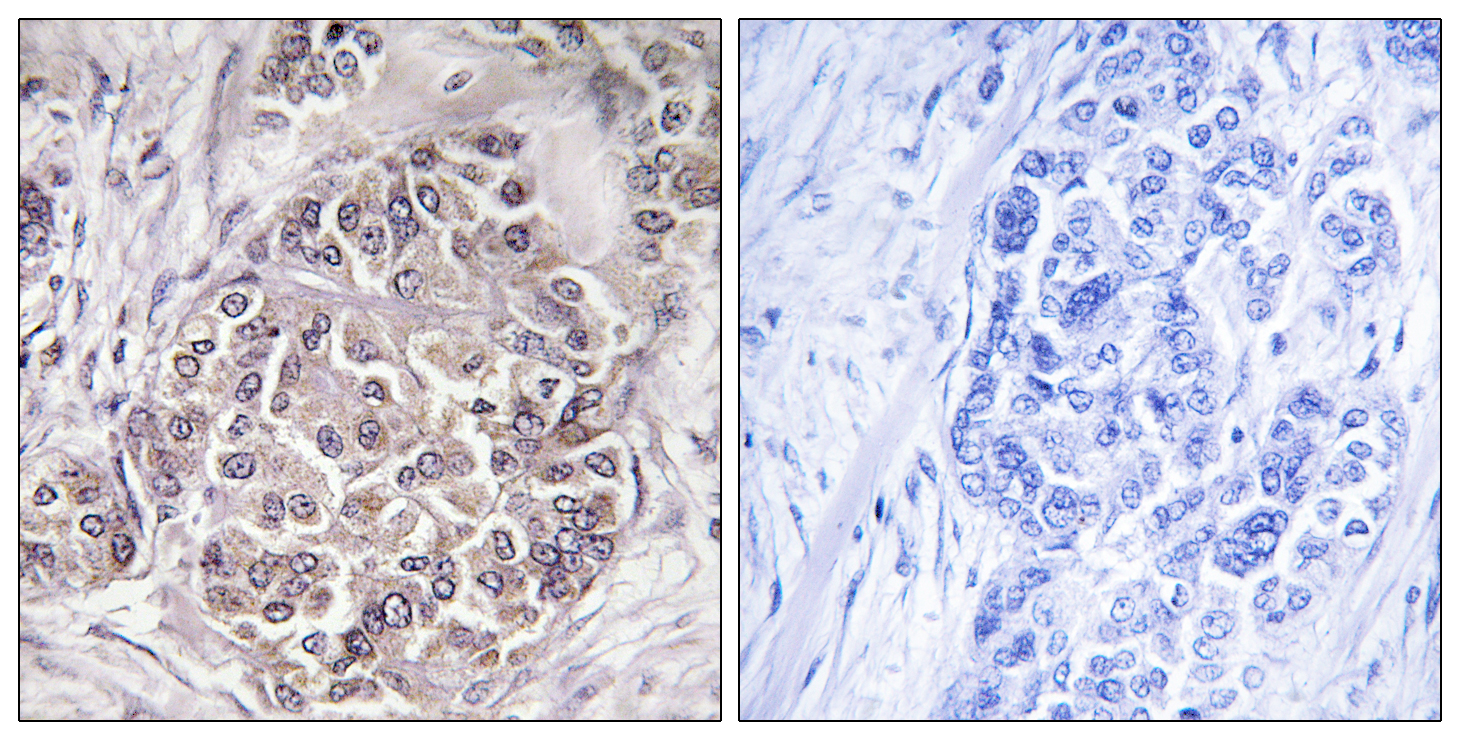Peroxin 1 Polyclonal Antibody
- Catalog No.:YT3669
- Applications:IHC;IF;ELISA
- Reactivity:Human;Mouse
- Target:
- Peroxin 1
- Fields:
- >>Peroxisome
- Gene Name:
- PEX1
- Protein Name:
- Peroxisome biogenesis factor 1
- Human Gene Id:
- 5189
- Human Swiss Prot No:
- O43933
- Mouse Gene Id:
- 71382
- Mouse Swiss Prot No:
- Q5BL07
- Immunogen:
- The antiserum was produced against synthesized peptide derived from human PEX1. AA range:1234-1283
- Specificity:
- Peroxin 1 Polyclonal Antibody detects endogenous levels of Peroxin 1 protein.
- Formulation:
- Liquid in PBS containing 50% glycerol, 0.5% BSA and 0.02% sodium azide.
- Source:
- Polyclonal, Rabbit,IgG
- Dilution:
- IHC 1:100 - 1:300. ELISA: 1:10000.. IF 1:50-200
- Purification:
- The antibody was affinity-purified from rabbit antiserum by affinity-chromatography using epitope-specific immunogen.
- Concentration:
- 1 mg/ml
- Storage Stability:
- -15°C to -25°C/1 year(Do not lower than -25°C)
- Other Name:
- PEX1;Peroxisome biogenesis factor 1;Peroxin-1;Peroxisome biogenesis disorder protein 1
- Molecular Weight(Da):
- 143kD
- Background:
- This gene encodes a member of the AAA ATPase family, a large group of ATPases associated with diverse cellular activities. This protein is cytoplasmic but is often anchored to a peroxisomal membrane where it forms a heteromeric complex and plays a role in the import of proteins into peroxisomes and peroxisome biogenesis. Mutations in this gene have been associated with complementation group 1 peroxisomal disorders such as neonatal adrenoleukodystrophy, infantile Refsum disease, and Zellweger syndrome. Alternatively spliced transcript variants have been found for this gene. [provided by RefSeq, Sep 2013],
- Function:
- disease:Defects in PEX1 are a cause of adrenoleukodystrophy neonatal (NALD) [MIM:202370]. NALD is a peroxisome biogenesis disorder (PBD) characterized by the accumulation of very long-chain fatty acids, adrenal insufficiency and mental retardation.,disease:Defects in PEX1 are a cause of infantile Refsum disease (IRD) [MIM:266510]. IRD is a mild peroxisome biogenesis disorder (PBD). Clinical features include early onset, mental retardation, minor facial dysmorphism, retinopathy, sensorineural hearing deficit, hepatomegaly, osteoporosis, failure to thrive, and hypocholesterolemia. The biochemical abnormalities include accumulation of phytanic acid, very long chain fatty acids (VLCFA), di- and trihydroxycholestanoic acid and pipecolic acid.,disease:Defects in PEX1 are the cause of peroxisome biogenesis disorder complementation group 1 (PBD-CG1) [MIM:602136]; also known as PBD-CGE. PBD refer
- Subcellular Location:
- Cytoplasm. Peroxisome membrane. Associated with peroxisomal membranes.
- Expression:
- Brain,Lymph,Trachea,
- June 19-2018
- WESTERN IMMUNOBLOTTING PROTOCOL
- June 19-2018
- IMMUNOHISTOCHEMISTRY-PARAFFIN PROTOCOL
- June 19-2018
- IMMUNOFLUORESCENCE PROTOCOL
- September 08-2020
- FLOW-CYTOMEYRT-PROTOCOL
- May 20-2022
- Cell-Based ELISA│解您多样本WB检测之困扰
- July 13-2018
- CELL-BASED-ELISA-PROTOCOL-FOR-ACETYL-PROTEIN
- July 13-2018
- CELL-BASED-ELISA-PROTOCOL-FOR-PHOSPHO-PROTEIN
- July 13-2018
- Antibody-FAQs
- Products Images

- Immunohistochemistry analysis of paraffin-embedded human breast carcinoma tissue, using PEX1 Antibody. The picture on the right is blocked with the synthesized peptide.



